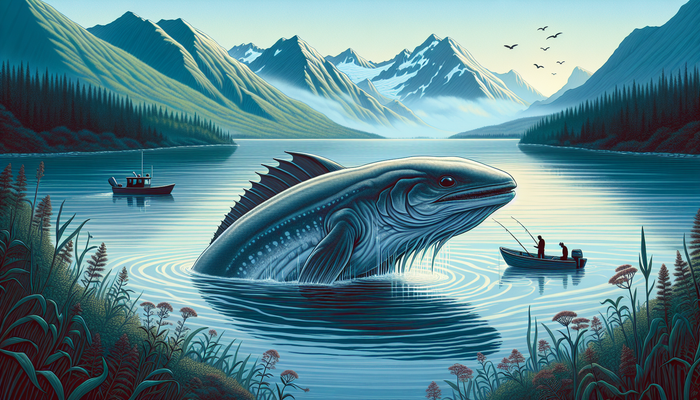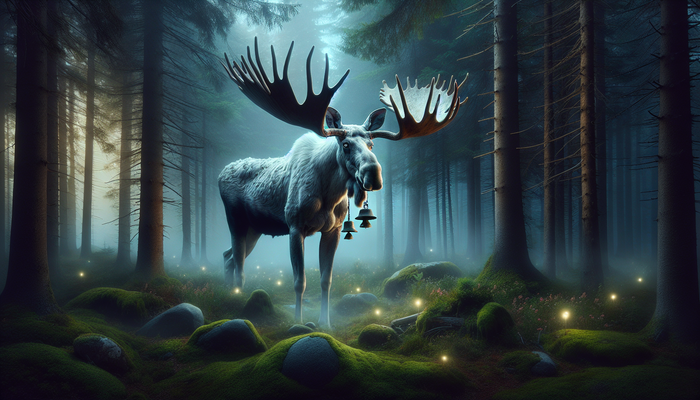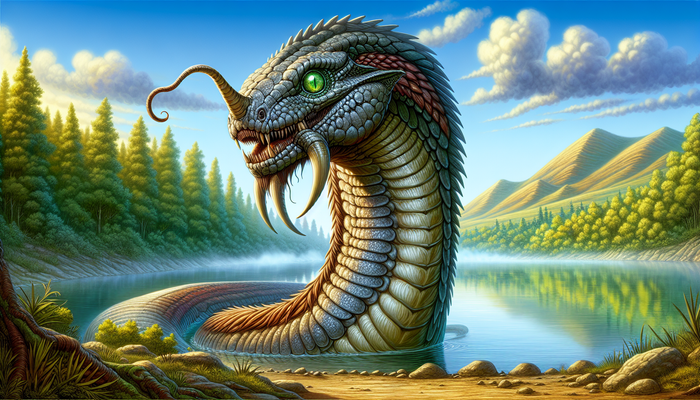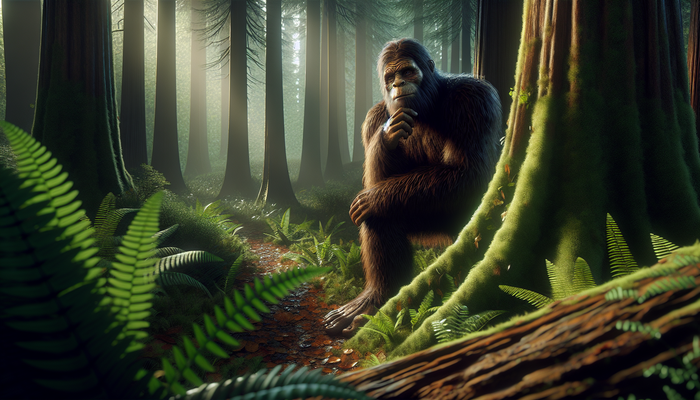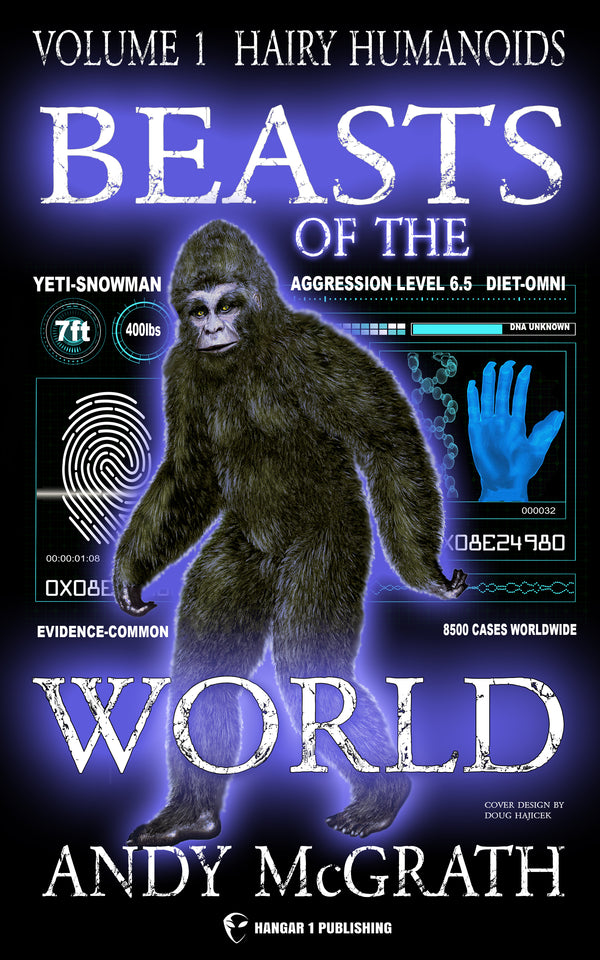Nevada Bigfoot: Exploring the Silver State's Legendary Encounters
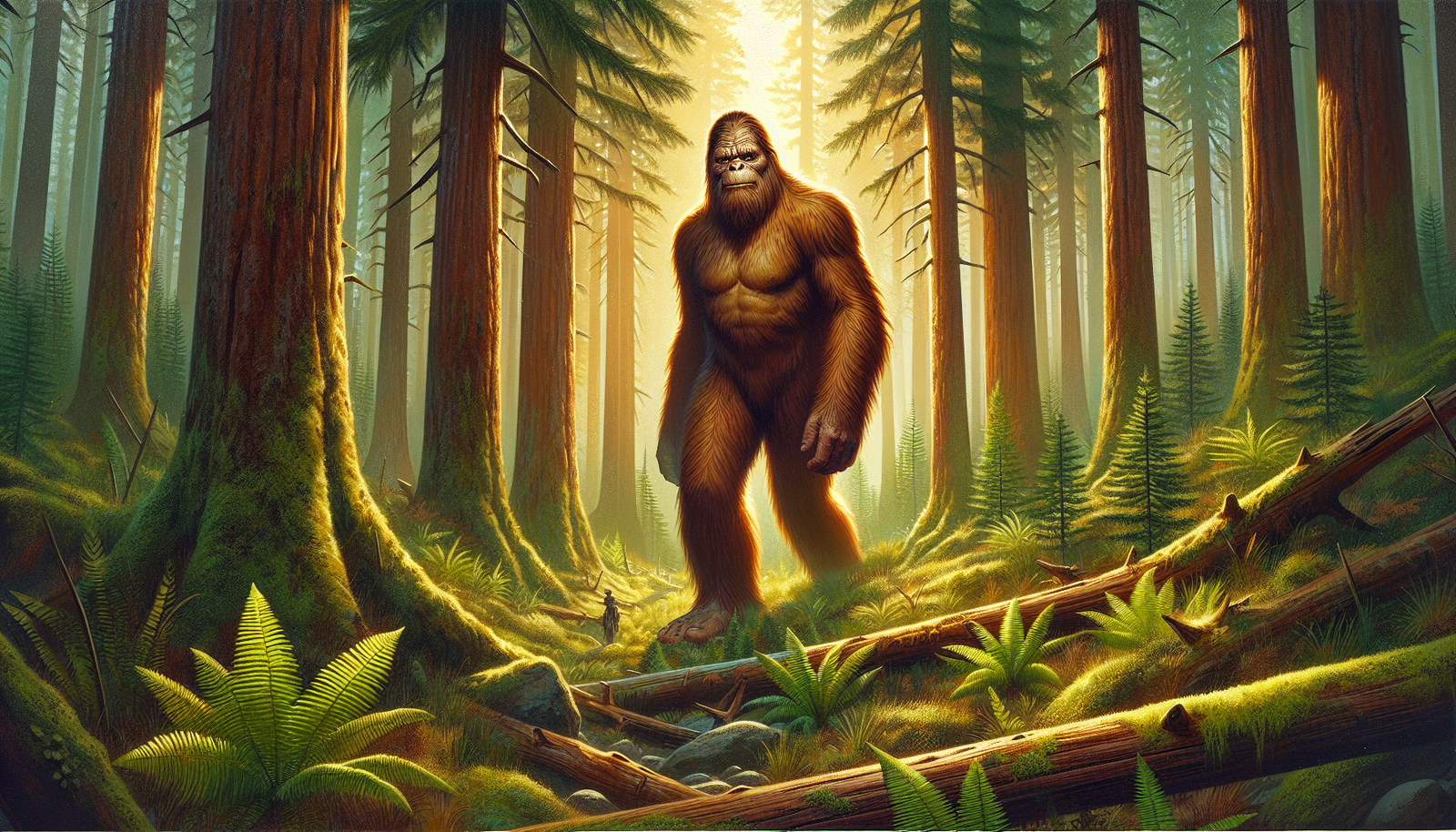
By James Roberts, Cryptozoologist
In the vast expanse of the American West, few mysteries captivate the imagination quite like the enduring legend of Bigfoot. This elusive, hairy, bipedal creature has been the subject of countless tales, sightings, and debates, sparking the curiosity of believers and skeptics alike. And while Bigfoot sightings have been reported across the nation, there's one state that stands out as a true hotspot for these enigmatic encounters: Nevada.
Known as the Silver State, Nevada boasts a diverse landscape that ranges from the arid deserts of the south to the towering peaks of the Sierra Nevada in the west. It's a land of stark beauty and rugged wilderness, where the untamed spirit of the Old West still echoes through the canyons and across the sagebrush plains. But amidst this breathtaking scenery, another presence lurks—one that has captured the hearts and minds of generations of Nevadans and visitors alike.
For decades, reports of Bigfoot sightings have emerged from every corner of the state, from the remote wilderness areas to the fringes of urban centers. These accounts, often steeped in Native American folklore and pioneer legends, paint a picture of a creature that is at once familiar and utterly alien—a being that seems to straddle the line between the natural and the supernatural.
In this article, we'll embark on a journey through the Silver State's most compelling Bigfoot encounters, exploring the history, mythology, and ongoing investigations that have made Nevada a true mecca for cryptozoological intrigue. From the Jarbidge Wilderness to the Lovelock Caves, and from the shores of Lake Tahoe to the streets of Reno, we'll delve into the stories and the science behind Nevada's Bigfoot phenomenon, seeking to unravel the truth behind one of the greatest mysteries of our time.
The Jarbidge Wilderness: A Bigfoot Hotspot Steeped in Shoshone Legend
Nestled in the far northeastern corner of Nevada, the Jarbidge Wilderness is a land of rugged beauty and primal mystery. This remote and untamed region, spanning over 113,000 acres of the Humboldt-Toiyabe National Forest, is characterized by its soaring peaks, deep canyons, and dense forests of aspen, fir, and pine. It's a place where the modern world seems to fade away, replaced by a timeless landscape that echoes with the whispers of ancient legends.
And among those legends, one stands out above all others—the tale of the Tsawhawbitts, or the "monster that lurks in the canyon." For centuries, the Shoshone people who have called this land home have spoken of a giant, hairy, humanoid creature that roams the wilderness, leaving behind strange footprints and chilling cries in its wake. According to one version of the legend, a group of Shoshone warriors once chased the Tsawhawbitts into a cave in the Jarbidge Canyon, trapping it inside with rocks and boulders. But even with the creature contained, the Shoshone remained wary, knowing that the Tsawhawbitts was a force to be reckoned with.
Fast forward to the present day, and the Jarbidge Wilderness has become a hotspot for modern Bigfoot sightings and encounters. The Bigfoot Field Researchers Organization (BFRO), a leading group dedicated to investigating and documenting Bigfoot activity, has recorded numerous reports from the area, with witnesses describing everything from fleeting glimpses of large, hairy bipedal creatures to strange vocalizations and unusual footprints.
One of the most compelling accounts comes from a group of hikers who were exploring the wilderness in the summer of 2000. According to their report, the group spotted a massive, upright figure walking along a distant ridge, silhouetted against the sky. The creature, which they estimated to be over 8 feet tall, moved with an easy, loping gait, its long arms swinging at its sides. The hikers watched in amazement as the figure disappeared into the trees, leaving them with a sense of both awe and unease.
Other witnesses have reported hearing strange, howling cries echoing through the canyons, unlike anything they've ever heard before. Some have even claimed to have found enormous footprints in the soft mud along creeks and streams, with individual prints measuring up to 18 inches in length.
But what makes the Jarbidge Wilderness such a prime habitat for Bigfoot? Experts point to several factors, including the area's remote location, its dense forests and rugged terrain, and its abundant wildlife. The wilderness is home to a variety of large mammals, including elk, deer, and black bears, providing ample food sources for a creature like Bigfoot. And with its network of caves and hidden valleys, the Jarbidge offers plenty of places for a large, elusive animal to hide and thrive.
Of course, skeptics argue that the Jarbidge Bigfoot sightings can be explained away as misidentifications of known animals, or even as hoaxes perpetrated by attention-seeking individuals. But for those who have experienced the wilderness firsthand, and who have heard the eerie cries and seen the strange footprints for themselves, the legend of the Tsawhawbitts is all too real.
As we continue our exploration of Nevada's Bigfoot phenomenon, the Jarbidge Wilderness stands as a testament to the enduring power of myth and mystery. Whether the creature that lurks in these canyons is a flesh-and-blood animal or a figment of our collective imagination, one thing is certain—the Jarbidge will continue to beckon to those who seek to unravel the secrets of the unknown.
The Lovelock Caves: Enigmatic Dwelling of the "Red-Headed Giants"
In the heart of the Great Basin desert, some 150 miles northeast of Reno, lies a series of ancient caves that have long been shrouded in mystery and intrigue. Known as the Lovelock Caves, these enigmatic caverns have been a source of fascination for archaeologists, anthropologists, and Bigfoot enthusiasts alike, thanks in large part to the strange and startling discoveries that have been made within their depths.
The Lovelock Caves first gained notoriety in the early 20th century, when a group of guano miners stumbled upon a trove of ancient artifacts and human remains buried deep within the caverns. Among the most intriguing finds were a series of mummified bodies, some of which were described as being exceptionally large and robust, with long, reddish hair and unusually elongated skulls.
These mysterious remains, which came to be known as the "red-headed giants," have since become the stuff of legend, with some researchers suggesting that they may represent a previously unknown race of ancient humans—or perhaps even a link to the elusive Bigfoot creature.
According to some accounts, the red-headed giants of the Lovelock Caves stood over 7 feet tall and possessed incredible strength and agility. Their remains were found buried alongside a variety of strange artifacts, including intricately woven baskets, elaborate headdresses, and weapons made from obsidian and other exotic materials.
But what really sets the Lovelock Cave giants apart from other ancient human remains is their alleged connection to the Bigfoot phenomenon. Some researchers have pointed to the similarities between the physical characteristics of the red-headed giants and those of the Bigfoot creatures described in modern sightings and encounters.
For example, both the Lovelock giants and Bigfoot are often described as being exceptionally tall and muscular, with long arms and large, powerful hands and feet. Both are also said to possess a reddish or auburn tint to their hair, which some believe could be a result of their diet or their exposure to the elements.
Furthermore, some Bigfoot enthusiasts have suggested that the Lovelock Caves themselves could have served as a sort of natural shelter or lair for the creatures, providing them with a safe haven from which to venture out into the surrounding wilderness. The caves' remote location and difficult access, combined with their labyrinthine network of chambers and tunnels, would have made them an ideal hideout for a large, elusive creature like Bigfoot.
Of course, the idea that the Lovelock Cave giants could be connected to the Bigfoot phenomenon is highly speculative, and there is no concrete evidence to support such a claim. Mainstream scientists and archaeologists have largely dismissed the notion, arguing that the red-headed giants were likely just a unique population of ancient Native Americans, perhaps with some genetic anomalies or adaptations that set them apart from other groups.
But for those who believe in the existence of Bigfoot, the Lovelock Caves remain a tantalizing piece of the puzzle—a place where the lines between myth and reality seem to blur, and where the secrets of the ancient past may hold the key to understanding one of the greatest mysteries of our time.
As we continue our journey through Nevada's Bigfoot lore, the Lovelock Caves stand as a reminder of the many layers of history and mystery that lie hidden beneath the surface of this rugged and beautiful land. Whether the red-headed giants were indeed a lost race of ancient humans, or whether they represent something altogether more extraordinary, one thing is certain—their legacy will continue to inspire and intrigue us for generations to come.
The Tahoe Region: Bigfoot Sightings in the Sierra Nevada Mountains
As we move westward from the desert valleys of central Nevada, we find ourselves in a land of towering peaks, crystal-clear lakes, and lush, verdant forests. This is the Tahoe region, a place of unparalleled natural beauty that straddles the border between Nevada and California, and that has long been a hotspot for Bigfoot sightings and encounters.
At the heart of the Tahoe region lies Lake Tahoe itself, a vast, sapphire-blue expanse of water that is renowned for its clarity and its stunning alpine setting. Surrounded by the majestic peaks of the Sierra Nevada Mountains, Lake Tahoe is a true natural wonder, drawing millions of visitors each year who come to swim, boat, hike, and ski in its pristine waters and on its snow-capped slopes.
But amidst the breathtaking scenery and the bustling tourist crowds, another presence lurks—one that has captured the imagination of Bigfoot enthusiasts and cryptozoologists for decades. For it was here, in the rugged wilderness surrounding Lake Tahoe, that one of the most famous and controversial pieces of Bigfoot evidence was captured: the Patterson-Gimlin film.
Shot on October 20, 1967, by Roger Patterson and Bob Gimlin, two Bigfoot researchers who were exploring the forests near Bluff Creek, California, the Patterson-Gimlin film purports to show a large, hairy, bipedal creature walking through a clearing, its long arms swinging at its sides as it turns to look at the camera. The film, which lasts just under a minute, has been the subject of intense scrutiny and debate ever since, with some experts claiming that it is the best evidence yet of Bigfoot's existence, while others dismiss it as an elaborate hoax.
Regardless of one's opinion on the Patterson-Gimlin film, there's no denying that it has had a profound impact on the world of Bigfoot research, and has helped to cement the Tahoe region's reputation as a hotspot for Bigfoot activity. In the years since the film was shot, countless other sightings and encounters have been reported in the area, with witnesses describing everything from fleeting glimpses of large, hairy creatures moving through the trees to strange, eerie vocalizations echoing through the night.
One of the most compelling aspects of the Tahoe region's Bigfoot phenomenon is the sheer number of sightings that have been reported in the area, and the consistency of the descriptions provided by witnesses. Many of these accounts describe creatures that are remarkably similar in appearance and behavior to the Bigfoot seen in the Patterson-Gimlin film, with witnesses reporting large, muscular bodies covered in dark, shaggy hair, and faces that are distinctly human-like in their features.
Some researchers have even suggested that the Tahoe region may be home to a family or clan of Bigfoot creatures, based on the frequency and geographic concentration of sightings in the area. These researchers point to accounts of multiple creatures being spotted together, often with smaller, juvenile individuals in tow, as evidence of Bigfoot's social and familial behaviors.
But what makes the Tahoe region such an ideal habitat for a creature like Bigfoot? Experts point to several factors, including the area's dense forests, rugged terrain, and abundant water sources, which would provide ample food, shelter, and cover for a large, elusive animal. The Sierra Nevada Mountains are also home to a wide variety of plant and animal life, including many species that are known to be important food sources for Bigfoot, such as deer, elk, and berries.
Furthermore, the Tahoe region's remote location and vast wilderness areas would provide plenty of space for a creature like Bigfoot to roam and thrive, far from the prying eyes of human civilization. With hundreds of square miles of untamed forest and mountain terrain to explore, it's no wonder that the Tahoe region has become such a focal point for Bigfoot research and investigation.
Of course, skeptics argue that the Tahoe Bigfoot sightings can be explained away as misidentifications of known animals, such as bears or even large, shaggy dogs. Some have even suggested that the Patterson-Gimlin film itself was an elaborate hoax, perpetrated by two men in a gorilla suit.
But for those who have experienced the Tahoe wilderness firsthand, and who have seen and heard things that defy conventional explanation, the legend of Bigfoot is all too real. Whether the creature is a flesh-and-blood animal or a figment of our collective imagination, one thing is certain—the Tahoe region will continue to draw those who seek to unravel the mysteries of the unknown, and who dare to venture into the heart of Bigfoot country.
The Reno Area: A Hub of Bigfoot Activity
As we continue our exploration of Nevada's Bigfoot phenomenon, we turn our attention to the Reno area, a bustling metropolis nestled in the foothills of the Sierra Nevada Mountains. At first glance, Reno might seem an unlikely place to find evidence of Bigfoot activity, with its glittering casinos, trendy restaurants, and vibrant arts scene. But as we delve deeper into the region's history and geography, we begin to see why this area has become such a hub of Bigfoot sightings and encounters.
Reno sits at the edge of the Great Basin desert, a vast expanse of sagebrush and alkali flats that stretches across much of northern Nevada. But just a short drive from the city center, the landscape begins to change, giving way to the dense forests and rugged peaks of the Sierra Nevada. It's in these wild, untamed spaces that many of the Reno area's most compelling Bigfoot sightings have occurred.
One of the most notable of these sightings took place in November 2001, near the town of Ely, Nevada, about 320 miles east of Reno. According to the report, a 22-year-old gas station attendant named James Stroud was out riding motorcycles with a friend when they stopped to rest and drink some water. Suddenly, they caught a whiff of a powerful, noxious odor, which Stroud described as smelling like "rotten garbage."
Moments later, the two men heard a series of strange, howling vocalizations coming from the surrounding woods. Stroud, an avid hunter, claimed that he had never heard anything like it before, and that the sounds sent a chill down his spine. As the men prepared to leave the area, Stroud caught a glimpse of a large, hairy creature moving away from them and into the trees, about 70 yards away.
Stroud estimated the creature to be around 7 to 8 feet tall, with a medium build and a coat of brownish hair with blondish highlights.
From Bigfoot to UFOs: Hangar 1 Publishing Has You Covered!
Explore Untold Stories: Venture into the world of UFOs, cryptids, Bigfoot, and beyond. Every story is a journey into the extraordinary.
Immersive Book Technology: Experience real videos, sights, and sounds within our books. Its not just reading; its an adventure.


